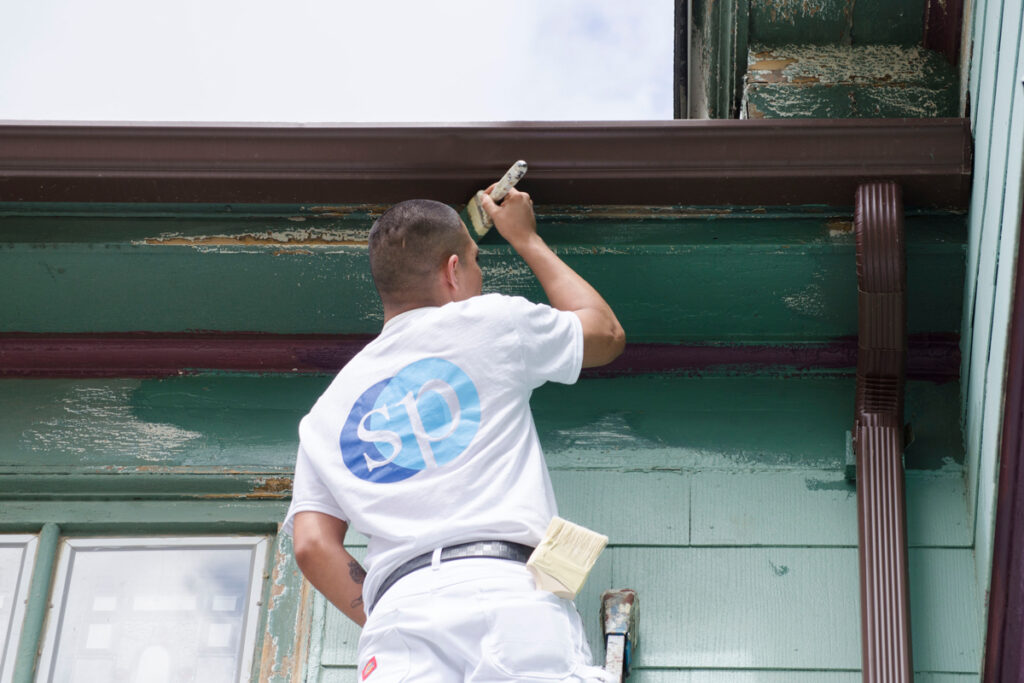1. Plan ahead and watch weather patterns.
It is important to watch current weather patterns and understand what is forecasted. Ideal conditions are dry and not over humid. Paint needs time to dry and will not adhere to surfaces that are not dry. Watch the weather each morning to make your determination if it is safe to paint that day!
2. You get what you pay for.
We firmly believe this when it comes to the contractor and the type of paint used. Paint technology has advanced drastically with latex based products and will yield great results if you use the paint we recommend in our estimates. Do not skimp on the quality of paint that you decide to put on your house! It will cause more repaints in the future and ultimately cost you more money in the long run.
3. Prep is a cornerstone of quality.
Paint won’t adhere well to dirty or rough surfaces, so be sure to clean the siding and trim thoroughly (we usually recommend power washing). Always allow adequate time to dry before scraping, sanding and priming begin. The goal is to get rid of all loose and peeling paint and minimize ridges or edges before applying any primer.
4. Protect the landscape.
It’s easy to forget how easy it is to damage plants and shrubs so always cover the ground, bushes and any other vegetation below the area you are painting. Also move or cover up any outdoor furniture, hoses, grills, etc. Use drop cloths and weigh them down on the corners or securely wrap them around the items you are protecting.
5. Paint will not stick to rotten siding.
Rotten wood and siding material are nearly worthless to paint, as they will do nothing but to continue to deteriorate. You have a couple of options. Replace the siding or wood trim with new components, or in the case of small areas, use a wood hardener and match with an exterior filler product, such as a wood filler. Be sure to prep and sand either one prior to painting.
6. Use primer.
Our rule is to always prime with a dedicated wood primer to any bare wood or concern areas. You can tint the primer to help with coverage for the finish coats. Latex will always stick to other latex but bare wood or problem areas need a coating to bite down on. The paint we use has a primer built into the product but we always will use a separate primer when spot priming a house to ensure quality and longevity.
7. Combine cans of paint.
Mixing multiple cans of the same color of paint into a larger container, such as a five-gallon bucket, will help ensure a uniform color is applied to your home’s exterior. This step is important if, for example, you initially bought a gallon or two of paint less than you needed and then picked up the extra gallons at a later time. If not followed it can cause color malfunctions and inconsistent colors throughout the project.
8. Add grit.
Painted porches (particularly steps) and other painted floors can become a bit too slick with a coat of paint alone, so add a little bit of fine sand to the paint to add traction. You can use play sand or additives that manufacturers produce to provide this extra texture.

9. Paint from top to bottom.
Starting at the top and working your way down while painting helps control streaks, as you will be working with gravity rather than against it. We always work from top to bottom left to right to avoid lap marks (lines where paint has dried and been recoated more times than other areas, showing differently) and provide a uniform finish once it is dry.
10. Close paint lids tightly.
Properly close your paint containers with their lids after you finish for the day to keep the paint from drying out. Use a rubber mallet to lightly hammer the lid shut. You can also add a plastic wrap film over the opening to ensure a tight seal.